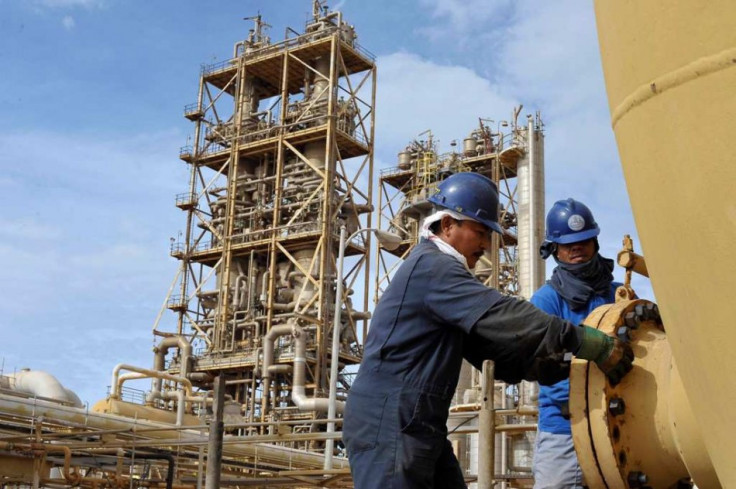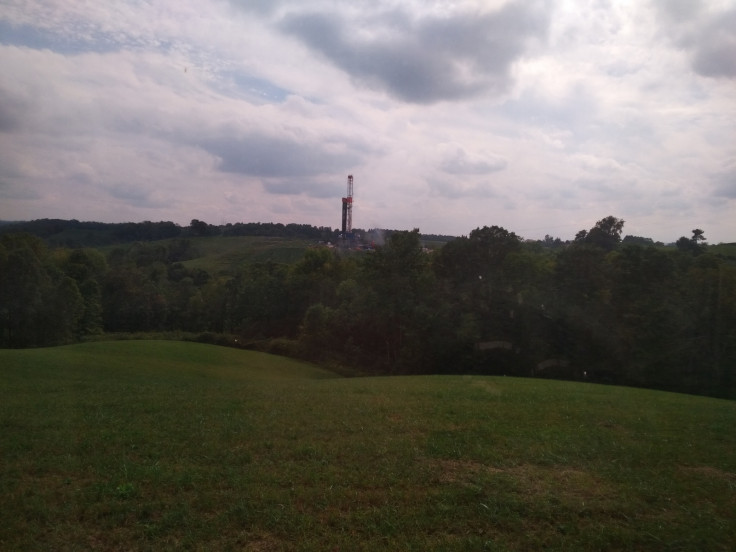Sheikhs vs Shale: An almighty oil market tussle ends in a draw
Neither Opec nor US shale producers could land a winning blow in the fight for oil market dominance.

The oil market is turning bullish courtesy of an Opec production cut brought in tandem, at least on paper, with a few non-Opec producers, including Russia. It is fair to say that oil producers of all stripes are relieved, having endured a torrid few years. Back in June 2014, with Islamic State (Isis) having advanced into northern Iraq, the oil price was sitting pretty at $115 per barrel.
Having met barely 24 hours before the news of the IS advance broke, Opec had decided to maintain its 'official' production level at 30m barrels per day (bpd), though the unofficial level was well above that. Physical crude analysts were left scratching their heads as to why the oil price was so high when US, Russian and Saudi oil production were coming in at recent highs, and demand growth was nowhere near what the market had seen 2012-13.
And then it happened. In July 2014 the oil price started declining gradually, despite the unfolding tragedy in Iraq, Russia-Ukraine tensions, Libya being up in flames and Nigeria in its state of perennial strife.
The so-called "risk premium" started evaporating in an oversupplied market simply because the world's largest crude importer, the United States, wasn't turning to the global market quite so much, courtesy of its own production uptick thanks to shale exploration.
In fact, US production had risen to a historic high of 8.44m bpd in the summer of 2014. Opec knew a serious medium-term competitor was emerging - and it knew something had to be done.
Stage set for a 'crude' war
So when the cartel next met, in November 2014, at its Secretariat in Vienna, heavyweight Saudi Arabia, with other oil-rich sheikhdoms in tow, decided that the best course of action would be to maintain market share and keep the taps open.
Not only that: the Saudis and several others raised their production levels to historic highs in a bid to flood the market and price out the competition. US shale explorers, driven by the spirit of private enterprise, kept plugging away. While their hedging strategies were in play, even fringe US shale players who had bought in exploration acreages at ridiculous boom-time prices kept pumping.
Far from being driven out of the market, within a year of Opec's decision US production rose to 9.6m bpd, according to the US Energy Information Administration (EIA) data, as the oil price continued to slide further. In the face of diminishing gains, the pain accelerated for both sides.

With the hedging plans of US independent explorers rolling off towards the middle of 2015, ratings agencies began reporting rising levels of bankruptcies within the sector. Meanwhile at Opec, in a desperate bid for a higher oil price, fiscal weaklings Venezuela and Nigeria began pleading and whinging to the sheikhdoms in general, and (now former) Saudi Oil Minister Ali Al-Naimi in particular, to reverse the stance of holding on to market share and to take measures to support the oil price.
The sheikhdoms were hurting, too, having had to dip into their massive foreign reserves to sustain their social programmes in the face of the declining proceeds of oil sales. Yet Al-Naimi did not relent and Saudi production actually rose above 10.5m bpd. This was more than one million bpd above 2014 levels.
Survival of the 'part-fittest'
Conventional logic dictates that only the fittest survive a war of attrition. Yet the complicating factor here was that both sides had pockets of fitness supporting their respective forays. In Opec's corner, Saudi Arabia, Kuwait and United Arab Emirates had enough in the bank to keep pumping in what is loosely described these days as an oil price era of "lower for longer".
Yet fellow member Venezuela was, and remains, on the brink of bankruptcy. Nigeria, Iraq and Libya were, and still are, grappling with internal strife. A belligerent Iran was also returning to the international fold, wanting to pump more.
In the US, Moody's noted fire sales of assets and exploration acreages, and 17 bankruptcies in 2015. The figure has more than doubled so far in 2016, with US production down to 8.7m bpd, according to the latest EIA data.

Yet at the same time the very spirit of ingenuity which gave the US its "shale bonanza" saw many independent upstarts with viable exploration acreages bring in high levels of efficiency gains. You could find shale plays in Eagle Ford, Texas, in the game even if the oil price plummeted below $30 - which it briefly did in January 2016.
By the summer of 2016 the new Saudi ruler, King Salman, had sent Al-Naimi packing into retirement and replaced him as oil minister with Khalid Al-Falih, the former boss of state-owned oil company Aramco. Opec finally went back into serious wheeling and dealing mode and, following six months of intense negotiations, to quote United Arab Emirates oil minister Suhail Al Mazroui, cut its headline crude production by 1.2m bpd to 32.5m bpd at its recent ministers' meeting on 30 November.
Winners and losers
Hostilities were suspended henceforth, but the winners of the tussle remain unclear. In a classic sense, Saudi Arabia remains the world's only swing producer, i.e. the one with the ability to ramp oil production up or down at will to make a tangible difference. However, Saudi and Opec power has been diminished by US shale producers with fiscal woes of their own, saddled with an erratic buffer role to play in the global market.
The losers were pretty apparent. Job losses in the sector - around the world, whether at state-owned or international oil companies, upstream, downstream or at oilfield services companies - numbered in their thousands. By some industry measures, around $1trn in oil and gas projects saw final investment decisions (FIDs) scheduled to be made in 2015 and 2016 put off indefinitely.
Yet all of this could easily happen again in a fragile market, and most probably will. Following Opec's decision, the Brent front month futures contract jumped by over 8% intraday, and by a massive 15.64% between 25 November and 2 December. All indications are that the price will settle in the $50-60 per barrel range over the short-term.
Anecdotal evidence suggests US shale producers have already started hedging their oil price risk for 2017 and 2018 above $50 per barrel. Meanwhile, Opec's Gulf producers are likely to bolster their finances, doubtless wondering when they ought to get back to protecting their market share. The Russians, whose own oil production is at a Soviet-era high of 11m bpd, harbour a deep mistrust of both sides in this high-stakes geopolitical game. All of the signs point to another crude tussle.
Gaurav Sharma is the Business Editor of IBTimes UK. He has been a financial journalist for over 15 years, with a core specialisation in macroeconomics and commodities. Follow Gaurav on Twitter.
© Copyright IBTimes 2025. All rights reserved.






















